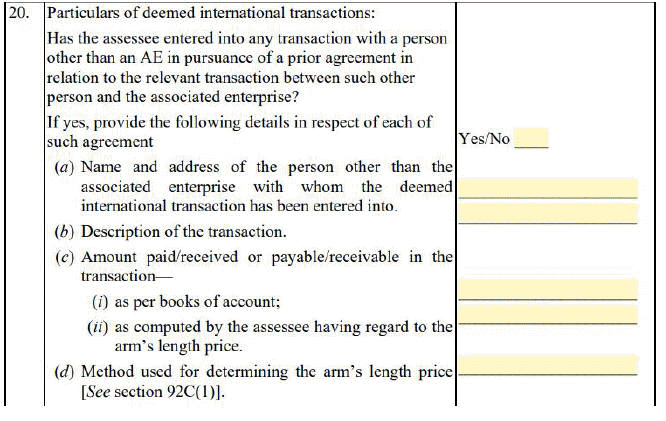[Opinion] Two Most Overlooked Aspects of Transfer Pricing Audits
- Blog|News|Transfer Pricing|
- 3 Min Read
- By Taxmann
- |
- Last Updated on 30 September, 2024
CA Deepak Kakkar – [2024] 166 taxmann.com 650 (Article)
In India, the transfer pricing regulations are governed by Sections 92 to 92F of the Income Tax Act, 1961.
These provisions ensure that transactions between related parties are conducted at an arm’s length price, which is the price that would be charged between independent parties in similar conditions.
The objective of the transfer pricing regulations is to prevent the shifting of profits to low-tax jurisdictions and to ensure that multinational enterprises (MNEs) report appropriate taxable income in India.
The key elements of the Indian transfer pricing regime include the determination of the arm’s length price (ALP), maintenance of comprehensive documentation, and mandatory reporting through the Form 3CEB, which is to be certified by a Chartered Accountant.
Transfer pricing provisions apply to a wide range of transactions, including the sale of goods, provision of services, intellectual property transfers, loans, and even cost-sharing arrangements. The regulations cover both international transactions and specified domestic transactions between related parties, emphasizing transparency and fairness in cross-border dealings to protect the Indian tax base.
However, there are certain aspects that are often overlooked by both taxpayers and tax auditors. This article will focus on two such commonly neglected areas:
- non-reporting of deemed international transactions under Section 92B(2) of the Income Tax Act, and
- incorrect consideration of Associated Enterprise definitions.
1. Non-reporting of Deemed International Transactions (Section 92B(2))
A major gap observed in transfer pricing audits is the non-reporting of deemed international transactions. Under Section 92B(2), even if a transaction is technically domestic, it may still qualify as an international transaction if it involves an arrangement between an Indian entity and another party via a third-party associated enterprise (AE).
Section 92B(2) of the Act states that:
“A transaction entered into by an enterprise with a person other than an associated enterprise shall, for the purposes of sub-section (1), be deemed to be an international transaction entered into between two associated enterprises, if
(a) there exists a prior agreement in relation to the relevant transaction between such other person and the associated enterprise, or
(b) the terms of the relevant transaction are determined in substance between such other person and the associated enterprise where the enterprise or the associated enterprise or both of them are non-residents irrespective of whether such other person is a non-resident or not”
As an auditor, to ensure that, you have covered all necessary aspects, review any potential deemed international transactions that may have arisen in common global arrangements such as:
- Global procurement or supply contracts
- Global service agreements
- Contracts related to common computer software or technology-related common contracts etc.
These kinds of arrangements often create deemed international transactions that could impact your TP compliance.
For instance, suppose a domestic subsidiary enters into a transaction with a third party, but that third party is either controlled or significantly influenced by the foreign parent or another AE.
In such cases, the transaction should be treated as a deemed international transaction. Unfortunately, many taxpayers overlook this provision, leading to underreporting or misclassification in transfer pricing documentation.
As a Transfer pricing auditor, it is mandatory to report in Form 3CEB read with Rule 10E whether the particulars required to be furnished under section 92E are given in the Annexure to that Form. Further, you have to opine to the best of your information and according to the explanations given to you, the particulars given in the Annexure are true and correct.
Clause 20 of Form 3CEB itself requires the assessee to report whether any deemed international transaction is entered or not as follows:
It is also worthwhile to note that, the transaction entered into by assessee falling in any of the two mentioned conditions will be treated Deemed International transaction irrespective of:
- Whether or not the associated enterprises have retained any benefit/discount from third party vendors in India/outside India
- Whether or not the transaction carried out by assessee is fair and arm’s length price
Click Here To Read The Full Article
Disclaimer: The content/information published on the website is only for general information of the user and shall not be construed as legal advice. While the Taxmann has exercised reasonable efforts to ensure the veracity of information/content published, Taxmann shall be under no liability in any manner whatsoever for incorrect information, if any.

Taxmann Publications has a dedicated in-house Research & Editorial Team. This team consists of a team of Chartered Accountants, Company Secretaries, and Lawyers. This team works under the guidance and supervision of editor-in-chief Mr Rakesh Bhargava.
The Research and Editorial Team is responsible for developing reliable and accurate content for the readers. The team follows the six-sigma approach to achieve the benchmark of zero error in its publications and research platforms. The team ensures that the following publication guidelines are thoroughly followed while developing the content:
- The statutory material is obtained only from the authorized and reliable sources
- All the latest developments in the judicial and legislative fields are covered
- Prepare the analytical write-ups on current, controversial, and important issues to help the readers to understand the concept and its implications
- Every content published by Taxmann is complete, accurate and lucid
- All evidence-based statements are supported with proper reference to Section, Circular No., Notification No. or citations
- The golden rules of grammar, style and consistency are thoroughly followed
- Font and size that’s easy to read and remain consistent across all imprint and digital publications are applied









 CA | CS | CMA
CA | CS | CMA


